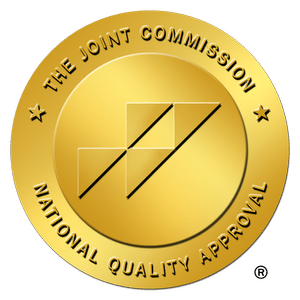Starting the journey to heal from trauma can feel overwhelming, but with the right approach, it can lead to profound personal growth and healing.
The first step is acknowledging the presence of trauma and its impact on your life. This awareness itself is a significant step toward recovery. It’s essential not to rush this process; understanding the depth and breadth of your experiences is crucial for effective healing.
Seeking professional help is highly recommended. Therapists specializing in trauma can provide a safe space to explore your feelings, thoughts, and memories without judgment. They can offer strategies such as Cognitive Behavioral Therapy (CBT), Eye Movement Desensitization and Reprocessing (EMDR), or other trauma-informed approaches such as Accelerated Resolution Therapy (ART) which have been proven effective in treating trauma.
Equally important is the cultivation of a supportive network. Connecting with understanding friends, family, or support groups can provide the emotional backing you need.
In parallel, engaging in self-care practices like mindfulness, meditation, and regular physical activity can greatly enhance your mental health and resilience. Starting your healing journey involves combining professional guidance, community support, and personal well-being practices to rebuild a sense of control and hope.
How Do I Know If I’m Healing? 10 Signs That Will Tell You
Recognizing signs of healing from trauma is crucial as it helps validate your progress and encourages continued growth. Here are 10 signs that indicate you are on the path to recovery from its effects:
1. Reduced Intensity of Symptoms
Symptoms such as anxiety, flashbacks, and hypervigilance begin to lessen in intensity and frequency. You might find that you’re not as easily triggered as you used to be
2. Increased Emotional Regulation
You gain better control over your emotions. The emotional roller coaster starts to stabilize, allowing you to handle ups and downs more effectively
3. Improved Relationships
As you heal, your relationships often improve. You may find it easier to trust others, express your needs, and set healthy boundaries
4. Greater Sense of Self-Worth
Healing can lead to an improved self-image and increased self-esteem. You start to feel more deserving of happiness and respect
5. Reconnection with Your Body
Trauma can lead to disconnection from your body. Healing might mean becoming more attuned to your physical needs and sensations
6. Ability to Focus on the Present
While trauma can keep you locked in the past, healing helps you focus more on the present and plan for the future without constant fear
7. Return of Interest in Activities
You may rediscover enjoyment in hobbies and activities that you previously avoided or felt indifferent toward
8. Acceptance of the Traumatic Event
Part of healing is coming to terms with what happened, understanding it’s a part of your story but not your entire identity
9. Physical Health Improvements
Chronic stress and trauma can manifest physically. Healing might be visible through better sleep, fewer somatic symptoms, and overall improved physical health.
10. A Renewed Sense of Hope and Optimism
Finally, one of the most profound signs of healing is the return of hope. You believe that life can be good again and feel more optimistic about your future
These signs are not exhaustive, and healing can manifest in many different ways. It’s important to recognize and celebrate your own unique journey towards recovery.
Trauma Healing While In Therapy
Healing from trauma while engaged in therapy involves multiple strategies and approaches tailored to individual needs. Therapy offers a structured and supportive environment where healing can be facilitated through professional guidance and evidence-based practices. Here are the key components of trauma healing during therapy:
Establishing Safety: The primary goal at the beginning of therapy is to create a safe, trusting environment. Feeling safe with the therapist is crucial for effective work on traumatic experiences.
Trauma-Informed Care: Therapists who specialize in trauma understand the profound effects trauma has on the mind and body. They use trauma-informed approaches that emphasize physical, psychological, and emotional safety to help clients rebuild a sense of control.
Different Therapeutic Modalities: Depending on the individual’s needs, therapists might employ various therapeutic techniques. Common approaches include Cognitive Behavioral Therapy (CBT), which helps in restructuring negative thought patterns, Eye Movement Desensitization and Reprocessing (EMDR) and Accelerated Resolution Therapy (ART), which is specifically designed to alleviate the distress associated with traumatic memories.
Expression Through Language and Art: Therapy often encourages the expression of trauma through language—talking it out—or through art, music, or movement. These expressive therapies provide alternative ways for individuals to confront and understand their emotions and thoughts without becoming overwhelmed.
Building Resilience and Coping Skills: Therapy assists in developing coping strategies to manage symptoms and stressors effectively. This includes teaching grounding techniques, mindfulness, and other stress management skills.
Integrative Healing Approaches: Many therapists incorporate techniques such as mindfulness-based stress reduction, yoga, or acupuncture alongside traditional therapy methods to support overall healing.
Addressing Root Causes: Therapy aims to go beyond symptom management by addressing the root causes of trauma. This deep work helps prevent the recurrence of symptoms and promotes long-term healing.
Empowerment and Growth: As individuals progress in therapy, they often experience an increase in personal empowerment. They learn to set boundaries, advocate for themselves, and make healthier life choices, which are all crucial for recovery and personal growth.
Therapy for trauma healing is a gradual process that respects each individual’s pace and boundaries. It involves much patience and commitment, but with the right therapeutic support, individuals can rebuild their lives and find a renewed sense of purpose and peace.

10 Ways To Know You Are Healing Emotionally
Recognizing emotional healing can be subtle, and it often happens gradually. Knowing that you are on the path to emotional recovery involves observing changes in your feelings, thoughts, and behaviors over time. Here are key indicators that suggest you are healing emotionally:
- Improved Mood Stability: Emotional healing can lead to fewer intense emotional fluctuations. You may notice that you feel more balanced and that your mood swings are less frequent and severe.
- Decreased Anxiety and Fear: As you heal, you might observe a reduction in feelings of anxiety and fear. Situations that once felt threatening or overwhelming now evoke less intense reactions.
- Enhanced Resilience: You find yourself better able to cope with stress and bounce back from setbacks more quickly. This resilience indicates a robust emotional foundation that is being rebuilt.
- Healthier Relationships: Healing often results in improved relationships. You may find it easier to communicate, express empathy, and maintain healthier boundaries with others.
- Increased Self-Awareness: Emotional healing brings about a greater understanding of oneself. You become more aware of your emotions and the triggers that affect them, which allows for better management of your emotional responses.
- Ability to Experience Joy and Pleasure: One of the most significant signs of emotional healing is the return of joy and pleasure in daily activities. You begin to enjoy life more and engage more fully with hobbies and interests.
- Forgiveness: Whether it’s forgiving yourself or others, forgiveness is a powerful sign of emotional healing. Letting go of past hurts and resentments can free up emotional space and reduce inner conflict.
- Restorative Sleep: Emotional distress often disrupts sleep patterns. Healing may be evident if you notice improvements in your sleep quality, such as falling asleep faster, sleeping through the night, or feeling more rested upon waking.
- Positive Outlook on Life: As you heal emotionally, you may notice a shift in your outlook on life. You might feel more hopeful and optimistic about the future, even in the face of challenges.
- Self-Compassion and Kindness: Finally, emotional healing often leads to increased self-compassion. You might find that you are kinder to yourself and more forgiving of your mistakes.
These signs of emotional healing can vary widely from person to person. It’s important to acknowledge and celebrate these changes as they occur, recognizing that healing is not linear but rather a journey with ups and downs.
Corner Canyon Welcomes You
If you or a loved one are looking for a compassionate space to work on trauma-related issues or enhance your recovery from mental health issues or addictions, we are specialists in providing this care. Reach out to our Admissions team now at Corner Canyon Health Centers.




